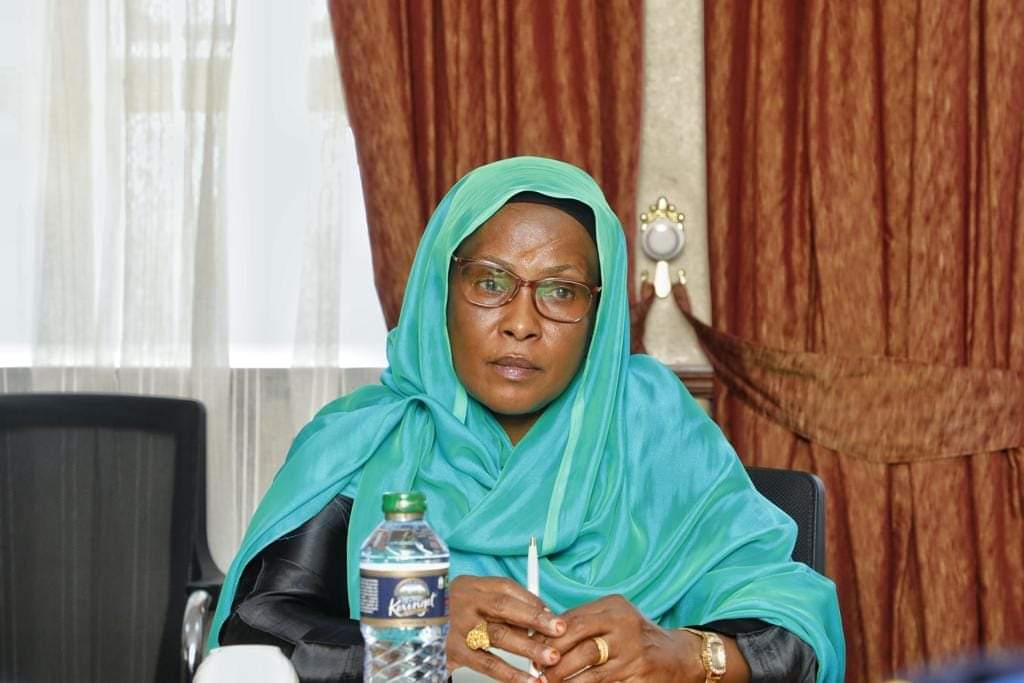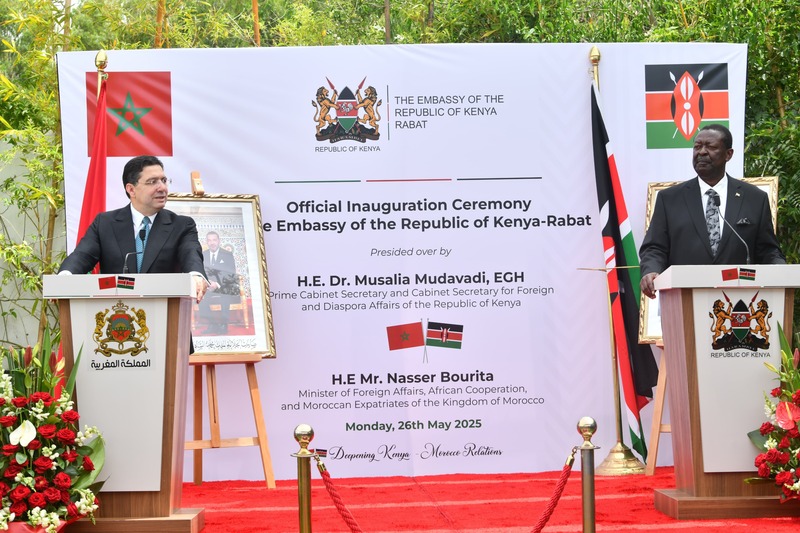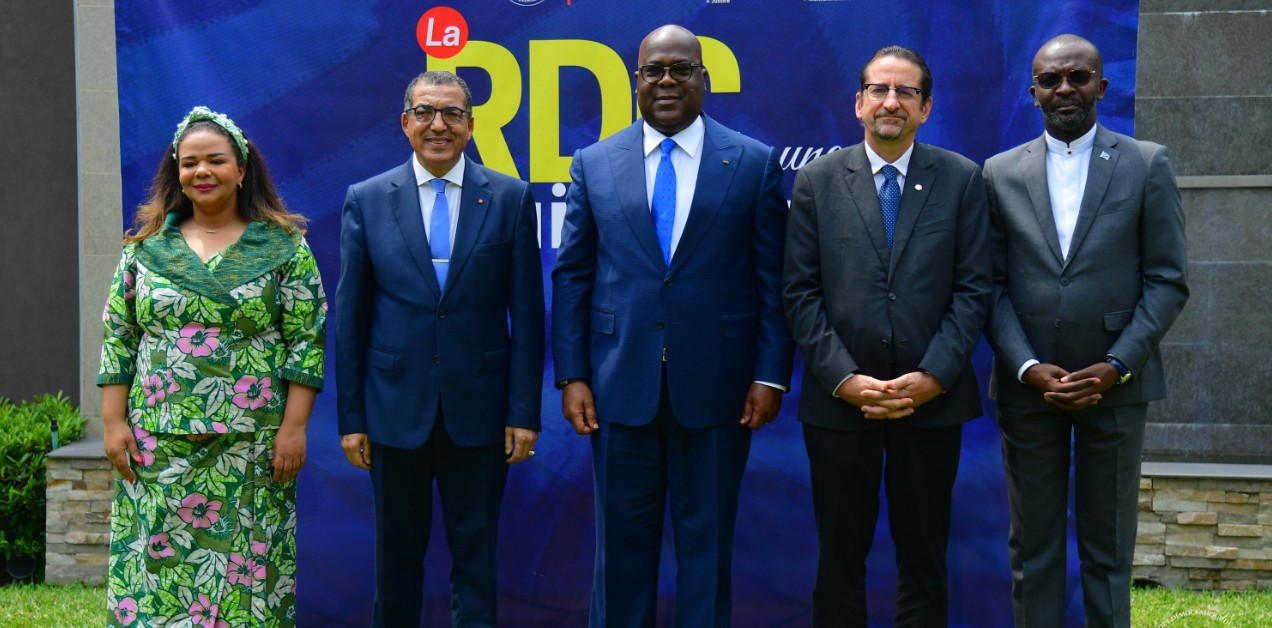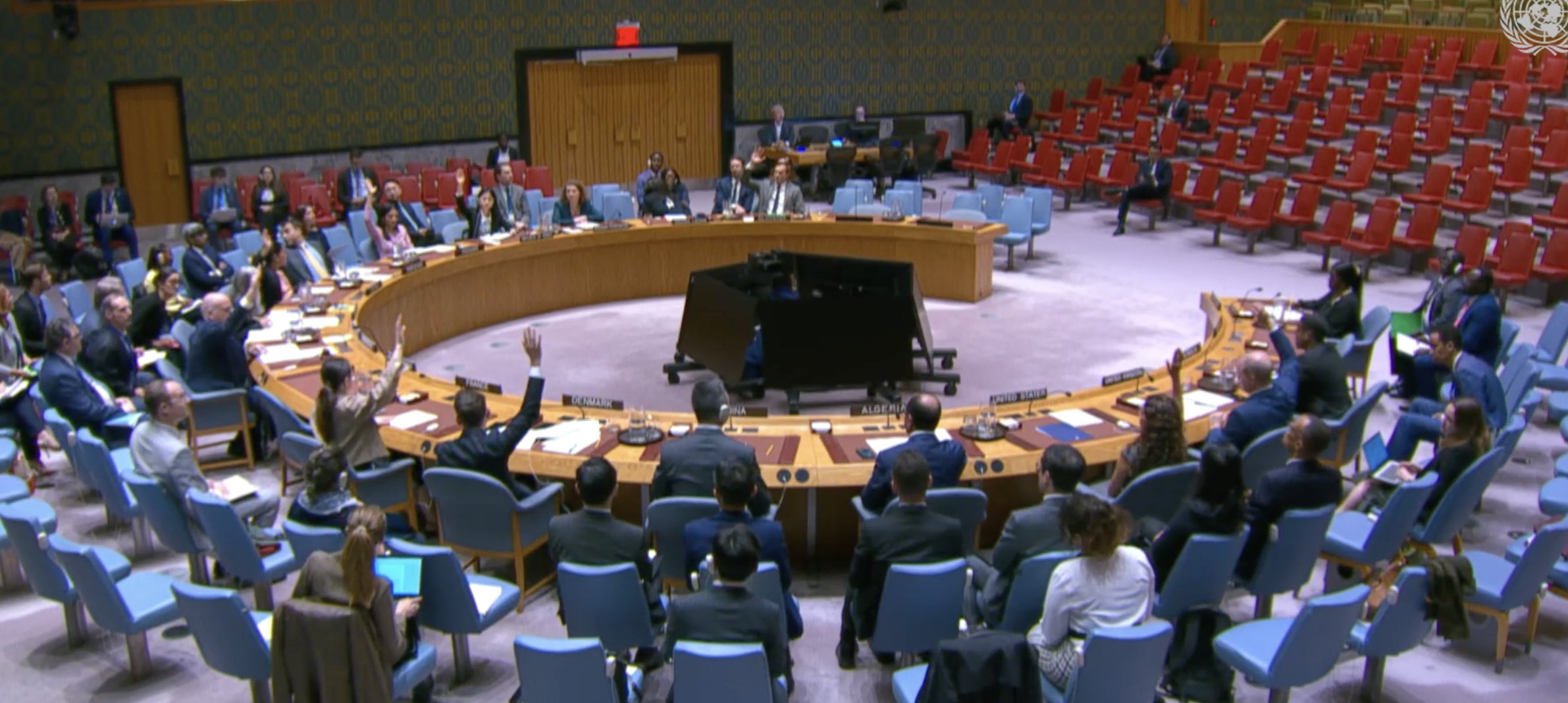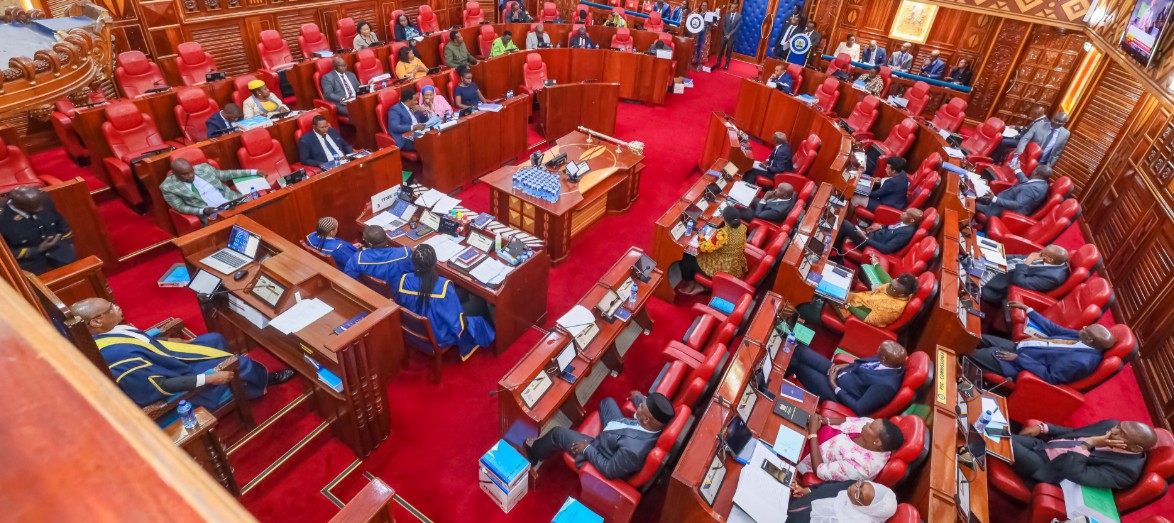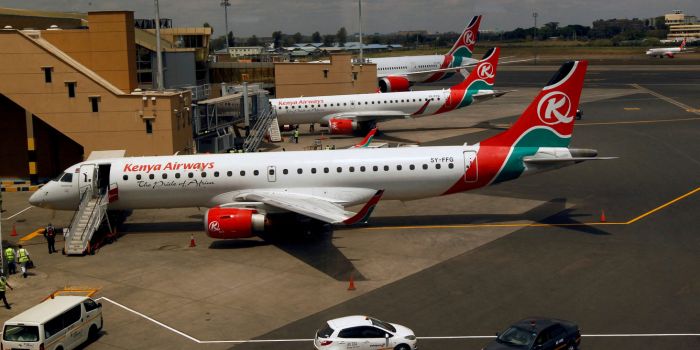Behind the story of coffee: Africa's struggle against colonialism

Eastern Africa, where Kenya is located, shares an inseparable bond with coffee, while Ethiopia, in the Horn of Africa, is widely hailed as the birthplace of coffee.
In a cozy café nestled in Nairobi’s Karen district, chestnut-coloured AA-grade Kenyan coffee beans are carefully ground, extracted and brewed under the focused gaze of a local barista.
The bitterness transforms into something wondrous, a bright acidity blossoms, reminiscent of ripe, juicy tropical fruits. The aroma quickly fills the room, invigorating the senses.
Eastern Africa, where Kenya is located, shares an inseparable bond with coffee, while Ethiopia, in the Horn of Africa, is widely hailed as the birthplace of coffee.
Speciality beans like Kenya AA and Ethiopia Yirgacheffe are beloved by coffee aficionados around the globe and remain highly sought-after commodities on the world market.
From “Originating in Africa” to “Out of Africa,” the humble coffee bean carries with it a painful legacy of colonisation and exploitation.
Today, the magic bean has become a symbol of resilience and self-reliance for Africa and the Global South, bearing witness to a rising new tide from the Global South.
UNEXPECTED GIFT FROM AFRICA
Coffee is often regarded as an unexpected gift from Africa.
Legend has it that around 800 CE, in the Kaffa region of southern Ethiopia, a goat herder named Kaldi noticed his goats becoming unusually energetic and lively after consuming red berries from an unfamiliar shrub.
Curious, Kaldi tried the berries himself and experienced a similar invigorating effect. He shared the discovery with a local monastery, where the monks, initially skeptical, eventually found that the beverage made from these berries helped them stay awake during long hours of prayer.
The tale, though likely apocryphal, is widely accepted as the origin story of coffee, with the word “coffee” believed to derive from “Kaffa,” the region where it was first discovered.
Today, coffee remains integral to Ethiopian culture, with expressions like “Buna dabo naw (Coffee is our bread)” illustrating its importance.
Arabica and Robusta, the two most prominent coffee bean varieties globally, are believed to have their origins in Africa. The highland climates of East Africa provide ideal conditions for cultivating Arabica beans, while the lowland regions of Central, Western and parts of Eastern Africa are well-suited for Robusta cultivation.
Both varieties play crucial roles in the global coffee industry, catering to diverse consumer preferences and supporting the economies of coffee-producing regions worldwide.
The Lake Victoria Crescent region, with its suitable terrain and tropical climate, provides an ideal environment for cultivating Robusta coffee.
This area, characterized by its fertile soils and consistent rainfall, has long been recognised as the native habitat of wild Robusta coffee trees.
For centuries, wild Robusta coffee trees have thrived in Uganda’s natural forests. Long before the arrival of European colonisers, the Baganda people had already begun cultivating coffee.
Today, in traditional coffee-growing regions such as the areas surrounding Mount Elgon and the Rwenzori Mountains, some ancient coffee trees still stand, bearing witness to the country’s enduring coffee heritage.
COFFEE CHERRY AND WHIP
“I had a farm in Africa, at the foot of the Ngong Hills. The Equator runs across these highlands, a hundred miles to the north, and the farm lay at an altitude of over six thousand feet.”
Karen Blixen, a Danish author, begins her 1937 memoir Out of Africa with this iconic line.
In the book, Blixen recounts her experiences from 1914 to 1931, during which she managed a coffee plantation in British East Africa, now Kenya.
Her reflections provide insight into the complexities of colonialism and the personal transformations she underwent during her time in Africa.
In the late 19th century, driven by profit motives, Western colonial powers forcibly seized land from indigenous communities in East Africa to establish plantations for cash crops like coffee.
In 1893, French missionaries introduced coffee to Kenya, planting the first Bourbon variety seeds from Reunion Island near Nairobi. Two years later, in 1895, the British government declared the region the British East Africa Protectorate, and by 1920, it had become the Kenya Colony under direct British colonial rule.
Recognising the profitability of cash crops, the British colonial administration prioritised the cultivation of coffee. They identified the central highlands — characterised by fertile volcanic soils, elevations between 1,500 and 2,100 meters and a temperate climate — as ideal for Arabica coffee farming, leading to the rapid commercialisation of coffee cultivation in Kenya.
Land was among the foremost targets of colonial plunder. In 1902, the British colonial administration enacted the Crown Lands Ordinance, declaring all land within the East Africa Protectorate as Crown Land under the authority of the British monarch.
This legislation permitted the sale or lease of parcels of land of up to 1,000 acres by authorised officials, with leases commonly set at 99 years. The most fertile regions, particularly in Kenya’s central highlands, were designated as the “White Highlands” and reserved exclusively for European settlers.
Indigenous communities, notably the Kikuyu and Kalenjin peoples, were forcibly displaced from their ancestral lands and relocated to less arable reserves. Under stringent colonial policies and burdensome taxation, many local inhabitants not only lost their land but were also compelled to serve as cheap labour on settlers’ farms.
Maina Kiarie, curator at the Enzi Museum in Kenya, said the European settler population in regions designated as the “White Highlands,” including Nanyuki, Nyahururu and the Uasin Gishu area, was approximately 100 in 1903. By 1950, this number had surged to over 80,000.
By 1960, around 2,000 European settlers each owned farms exceeding 2,000 acres, reflecting the extensive land consolidation by European settlers during the colonial period.
In “Out of Africa,” Blixen reflects on the exploitation of local tenant farmers by European landowners.
On her 6,000-acre farm, approximately 1,000 acres were cultivated by tenant families. These tenants, whose parents had also been born and raised on the estate, were indigenous to the land yet held no ownership rights.
“The squatters were natives, who lived on the farm with their families and cultivated their little shambas there. In return for this, they had to work for me a certain number of days in the year,” she wrote.
During the colonial era, European settlers prohibited indigenous Kenyans from cultivating coffee themselves, said Karuga Macharia, vice chairman of the African Fine Coffees Association based in Kenya.
“They were forcibly removed from fertile lands and relegated to labouring on settler-owned coffee plantations, often under exploitative conditions,” Macharia told Xinhua.
The colonial coffee industry was structured primarily for the export of raw coffee beans to Europe, where processing and sales occurred, leaving local communities with minimal economic benefit despite the crop being grown on their land, he said.
Meanwhile, Chris Oluoch, programmes director at Fairtrade Africa, highlighted the enduring impact of colonialism on Kenya’s coffee industry.
Today, Kenyan local producers often find themselves compelled to engage in the coffee trade through multinational corporations based in Western countries, he said.
 (240718) -- KAMPALA, July 18, 2024 (Xinhua) -- Women pour fresh coffee berries on a tarpaulin for sun-drying in a plantation near the town of Budadiri in the eastern Ugandan district of Sironko on June 6, 2024. Uganda's coffee exports have recorded the highest foreign exchange earnings in 30 years due to improved quantity and quality, a state regulator said Thursday.TO GO WITH "Uganda's coffee export earnings reach 30-year high" (Photo by Ronald Ssekandi/Xinhua)
(240718) -- KAMPALA, July 18, 2024 (Xinhua) -- Women pour fresh coffee berries on a tarpaulin for sun-drying in a plantation near the town of Budadiri in the eastern Ugandan district of Sironko on June 6, 2024. Uganda's coffee exports have recorded the highest foreign exchange earnings in 30 years due to improved quantity and quality, a state regulator said Thursday.TO GO WITH "Uganda's coffee export earnings reach 30-year high" (Photo by Ronald Ssekandi/Xinhua)
Uganda, Kenya’s neighbour, became a British protectorate in the late 19th century.
During the colonial period, British authorities actively promoted tea cultivation, encouraging the local population to adopt tea as their primary beverage.
Meanwhile, Uganda’s coffee production was geared almost entirely towards export. This export-oriented approach meant that, despite being a major coffee producer, domestic consumption remained minimal.
In Uganda, the legacy of British colonialism continues to influence perceptions of coffee. A coffee brand named “kiboko,” meaning “hippopotamus” in Swahili, also refers to a whip traditionally made from hippopotamus hide.
During colonial times, British overseers used such whips to enforce labour on coffee plantations, leading to the association of coffee with forced labour among Ugandans.
This historical context has contributed to the perception of coffee as a “white man’s drink” in Uganda. Many locals have traditionally viewed coffee primarily as a cash crop for export rather than a beverage for local consumption.
INDEPENDENCE AND STRUGGLES
In the 1950s and 1960s, Africa witnessed a surge in national liberation movements.
On Dec. 12, 1963, Kenya gained independence from British colonial rule. However, the departure of the colonisers did not dismantle the economic structures they had established.
Coffee, introduced during the colonial era as a primary cash crop, became a double-edged sword in Kenya’s post-independence economic development.
While it generated foreign exchange earnings, it also contributed to food insecurity, rural poverty and entrenched inequalities within the agricultural value chain.
In the early years following independence, the Kenyan government continued the colonial economic model, allocating vast tracts of land to the cultivation of cash crops like coffee and tea.
This focus on export-oriented agriculture brought in foreign revenue but marginalised food production, leading to reduced domestic food supplies.
While merchants and exporters profited, many farmers remained impoverished. In rural Kenya, protests frequently erupted over the low prices offered for coffee, reflecting widespread discontent among smallholder farmers.
In the heart of Nairobi, a white-and-green high-rise building, home to the Nairobi Coffee Exchange (NCE), still stands. Established in 1935, the institution from the colonial era continues to dominate Kenya’s coffee export.
“We are still deeply reliant on international markets, exporting mostly semi-processed coffee beans. As a result, the majority of profits are captured by middlemen and developed countries, leaving our farmers with just a fraction of the final retail value,” said Dennis Munene Mwaniki, executive director of the China-Africa Center at Kenya’s Africa Policy Institute.
The majority of Kenyan coffee is exported in semi-processed form through the NCE, a system established during colonial rule, he said, adding that this structure limits Kenya’s control and influence over the coffee value chain.
“This approach is one of the reasons behind the challenges facing Kenya’s coffee industry today,” he said.
Pricing at the NCE is largely determined by a few international buyers and local intermediaries, leaving local coffee farmers with little choice but to accept the prices offered.
The coffee industry’s business model is based on a type of neo-colonialism, dominated by a handful of transnational coffee merchants whose profits are bountiful, said a commentary on Australia’s The Conversation website.
“Over 80 percent of the world’s coffee comes from 25 million small-scale farmers and 60 percent is produced by farmers on less than 5 hectares. Many of them struggle to make a decent living,” it said.
Kenyan coffee farmers exemplify this disparity. While a cup of coffee in European speciality cafés typically costs around 4 U.S. dollars, many Kenyan coffee labourers earn at most 2.3 dollars per day.
For Ethiopia, despite the global acclaim and high retail prices of Ethiopian coffee, only about 5 to 10 percent of the final retail price returns to Ethiopia.
The majority of profits are captured by international distributors and brokers. Consequently, many Ethiopian coffee farmers earn as little as 500 dollars annually, despite their year-round labour, according to data from the World Bank.
Meanwhile, in Uganda, the coffee industry is similar to that of other African countries, as it continues to grapple with the enduring legacies of colonial economic structures.
Nelson Tugume, chairman of Inspire Africa Group, said that this profound inequity not only demoralises coffee farmers but also impedes the sustainable development of Africa’s coffee sector.
He called for a more equitable and reasonable allocation of the substantial wealth generated by the global coffee trade, asserting that African coffee farmers deserve a fairer share of the profits.
FAIR TRADE AND COOPERATION
The call for Africa to move beyond being merely a supplier of raw materials in the global coffee industry is growing stronger in coffee-producing countries like Kenya, Ethiopia and Uganda.
One of Kenya’s strategies to achieve this goal has been the formation of smallholder coffee cooperatives.
According to the African Fine Coffees Association, Kenya’s coffee sector comprises approximately 800,000 smallholder farmers who are organised into around 500 cooperatives.
By doing so, small-scale farmers can pool resources, share knowledge, and improve the quality and consistency of their coffee.
This collective approach not only empowers farmers economically but also contributes to the sustainable development of the coffee industry in Kenya, said Karuga Macharia, vice chairman of the association.
He explained that due to the limited availability of suitable land for coffee cultivation, Kenya’s coffee industry is focusing on increasing per-tree yields to boost overall production without expanding farmland.
Currently, cooperatives are assisting farmers in enhancing per-tree yields, with some reports indicating that well-managed trees can produce up to 40 kilograms annually, said Macharia.
In Kenya’s Kirinyaga County, the Mutira Farmers’ Cooperative Society, comprising approximately 8,000 smallholder farmers, is leveraging the region’s unique volcanic soils and favourable climate to produce high-quality coffee that is in demand on the international market.
Victor Munene, an agronomist with the cooperative, noted that the cooperative provides fertilisers and pesticides to farmers on credit, allowing them to repay the loans after delivering their coffee cherries.
“This system ensures that farmers can access necessary inputs even when they lack immediate funds, thereby improving both the yield and quality of their coffee,” said Munene.
He added that the cooperative offers both online and in-person training sessions, as well as telephone consultations, to support farmers.
In addition, the cooperative also regularly hires agronomists to conduct soil sampling and analysis, enabling precise identification of the nutrients required for optimal crop growth.
In recent years, the Kenyan government has intensified its efforts to support and reform the nation’s coffee industry through several key initiatives.
One major initiative has been the establishment and expansion of the Coffee Cherry Advance Revolving Fund, which provides unsecured loans to smallholder farmers to ease their access to credit.
The government has also introduced a “three-day payment guarantee” under the Direct Settlement System platform, ensuring that farmers receive payment within 72 hours after delivering their coffee cherries, a significant improvement from the previous approval period of 5 to 14 days.
Earlier this year, several government departments jointly rolled out new policies aimed at further improving coffee farming techniques, expanding cultivation into non-traditional regions and enhancing transparency in the auction system.
According to the Kenya National Bureau of Statistics, the country’s coffee export volume rose by 12 percent in 2024 to 53,519 tons. Export earnings also increased, climbing from 251 million dollars in 2023 to 296 million dollars in 2024.
NEW MARKET AND OPPORTUNITY
In addition to organising smallholder farmers into cooperatives to strengthen collective bargaining power, several African countries are also working to boost value addition in the coffee sector by developing local brands.
Ethiopia, currently Africa’s largest coffee producer and the fifth largest globally, produces approximately 600,000 tons of coffee annually.
In recent years, the country has taken significant steps to restructure its coffee industry, shifting from raw bean exports to customised, value-added products, as it climbs up the value chain.
To support this transition, the Ethiopian government has introduced a range of policies, including registering national coffee trademarks in key international markets and actively promoting Ethiopian coffee brands globally.
In 2004, recognising that most of its coffee producers were smallholder farmers, the Ethiopian government launched the Ethiopian Fine Coffee Trademarking and Licensing Initiative.
This initiative registered trademarks for three renowned coffee-producing regions: Yirgacheffe, Sidamo and Harar.
Uganda has also been making concerted efforts to enhance value addition in its coffee sector.
Ugandan President Yoweri Museveni has consistently emphasised that increasing value addition is central to the development of the country’s coffee industry.
In 2024, he signed the National Coffee (Amendment) Bill into law, which encourages the establishment of a transparent coffee auction system to protect farmers from exploitation by middlemen and promotes the growth of local processing enterprises focusing on value-added coffee products.
Kenya, Ethiopia and other African coffee-producing countries are also fostering South-South cooperation to enhance their positions in the global coffee industry by expanding their sales networks through trade fairs and e-commerce platforms, targeting emerging markets such as Egypt, Nigeria and China.
“If I know a song of Africa, of the giraffe and the African new moon lying on her back, of the plows in the fields and the sweaty faces of the coffee pickers, does Africa know a song of me …” Blixen wrote in “Out of Africa.”
If the humble coffee bean could sing, its song would echo with the bitterness of colonial pasts, the trials of independence, and the enduring spirit of Africa’s struggle for fairness and self-reliance.
Top Stories Today




